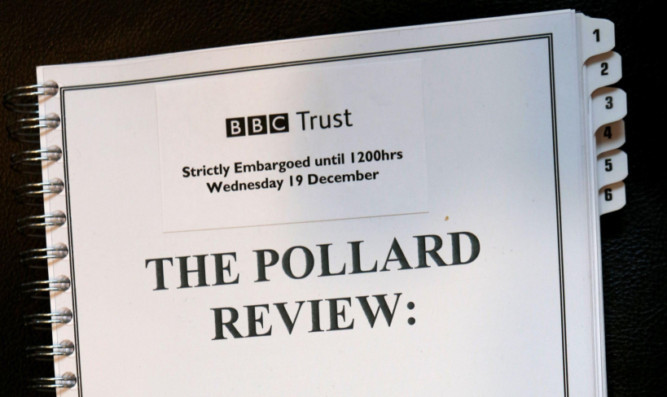Detailed accusations about Jimmy Savile’s sex crimes were censored after viewers tried to post them on a BBC tribute web page.
The comments, which included one person who wrote “One of my best friends in 1972 was molested by this creep Savile. He was never the same again. Killed himself in 1985. How’s About That Then?”, were stopped from being published by a team of moderators employed by the corporation.
The details were included in thousands of pages of evidence gathered during an inquiry by former journalist Nick Pollard into Newsnight’s decision to drop its Savile investigation, which were published today by the BBC.
A transcript of an interview between Mr Pollard and former director general George Entwistle refers to examples of the comments, including one person who wrote: “He was a paedophile. You may not like the truth but he was. It will all tumble out now.”
Another wrote: “Sorry to rain on the parade of all the well-wishers, but he was infamous in Scarborough. I would not have been letting my son sit on his knee.”
During his interview, Mr Entwistle said he thought moderators may have been affected by “anxiety” after details of a hoax, which claimed Savile had been challenged about his crimes on an episode of Have I Got News For You, were published online.
He told Mr Pollard: “I have seen an email where moderators are put on alert about not publishing stuff that is to do with this hoax, I think that might be part of the story about the pre-conditioning of their minds about how to treat critical material.”
Some 3,000 pages of emails, interviews and submissions from BBC executives and journalists, including Newsnight presenter Jeremy Paxman, were made available online in what the BBC said was a bid to be “open and transparent”.
The amount of traffic to the website crashed it this morning shortly after publication.
Acting director-general Tim Davie said : “The BBC has been open and transparent in its handling of this unhappy chapter in our history. It has not been an entirely comfortable process for us to go through but it is right that we did it this way.
“It is important that the BBC now moves forward with the lessons learned and continues to regain the public’s trust.”
